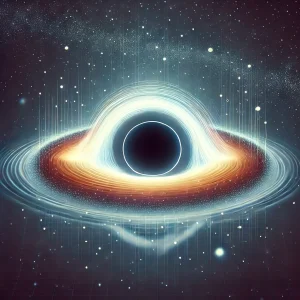Introduction
Cosmology, the study of the universe’s structure and origins, relies heavily on complex mathematical tools. Among these, Geometric Algebra (GA) has emerged as a powerful framework that unifies various branches of physics and mathematics. From relativity to quantum mechanics, GA provides a fresh perspective on fundamental concepts. In this blog, we explore how GA bridges the gap between mathematics and cosmology, making black hole physics and spacetime dynamics more intuitive.
Why Geometric Algebra Matters in Cosmology
Traditional mathematical techniques, such as tensor calculus, are often cumbersome and abstract. GA simplifies these approaches by providing a unified language that:
- Encapsulates vectors, rotations, and transformations naturally.
- Provides a direct geometric interpretation of spacetime.
- Reduces complex equations into compact, intuitive forms.
This makes GA a valuable tool for analyzing phenomena like black holes, dark matter, and the expanding universe.
Geometric Algebra and Black Hole Physics
Black holes warp spacetime in extreme ways, challenging traditional mathematical representations. GA simplifies:
- The Schwarzschild and Kerr Metrics: Describing static and rotating black holes using elegant geometric transformations.
- Spacetime Curvature: GA provides an intuitive way to visualize how mass distorts spacetime.
- Hawking Radiation: Quantum interactions at the event horizon can be modeled more naturally using GA’s structured approach.
GA in Quantum Mechanics and Relativity
Einstein’s equations of general relativity describe gravity as a geometric property of spacetime. GA extends this idea by:
- Representing relativistic motion through spacetime rotors.
- Providing an alternative way to express the Dirac equation in quantum mechanics.
- Unifying electrodynamics and gravity under a common mathematical framework.
Future of Geometric Algebra in Cosmology
As cosmologists continue to explore black holes, gravitational waves, and dark matter, GA may lead to deeper insights. Its ability to unify different branches of physics makes it a promising tool for future discoveries in the quest for a Theory of Everything.
Conclusion
Geometric Algebra provides a revolutionary way to describe the universe, bridging the gap between abstract mathematics and physical reality. As research progresses, GA could unlock new frontiers in cosmology, offering deeper insights into the mysteries of space and time.
With this, we conclude our blog series on Geometric Algebra and Black Holes. Stay tuned for more deep dives into the wonders of theoretical physics!


